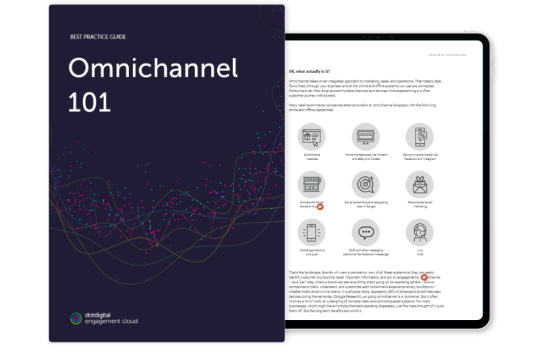What’s the difference between multichannel and omnichannel marketing?


Omnichannel is more than a marketing approach – it’s an attitude. It’s an expectation from shoppers who shop anywhere and everywhere. They expect you to be omnipresent – on their mobile, over email and SMS, available on live chat as well as in a physical store.
But marketers have struggled with understanding omnichannel as an idea. So, let’s try to make sense of it.
The principle of omnichannel has always centered around the concept of all – ‘omni’ in Latin.
But I think that prefix is the wrong root from the wrong language.
Let’s use ‘pan’ instead, which is a popular Greek root for many words in English. Pan is a more all-encompassing definition than omni; because it involves ‘all members of a group’.
For example, the defunct airline Pan American which in its heyday criss-crossed the length and breadth of the United States. Or the word panorama meaning an ‘unbroken view’.
Although omni has a close tie with with words like omnipresent and omnipotent, i.e. God in all places, the word pan better reinforces omnichannel’s characteristics: spanning data, traversing channels, connecting with people all the time, everywhere.
What is omnichannel marketing?
Omnichannel is an integrated marketing strategy that connects sales with marketing and operations.
Okay, but what does that mean?
It means that data flows freely throughout your business and all your systems, be they online or offline, are connected. Consumers can then shop across multiple outlets and channels without any disruption. The aim of omnichannel marketing is to deliver a unified customer journey across your brand(s).
Many retail ecommerce brands tailor to omnichannel shoppers using the following online and offline capabilities:
- Ecommerce websites like Magento, Shopify, or BigCommerce
- Social advertising and retargeting on Google
- Online marketplaces (i.e. Amazon, Alibaba)
- Personalized email marketing
- Bricks-and-mortar stores and popups
- Mobile apps and push
- SMS and other messaging platforms like Facebook Messenger
- Selling on social, like Facebook or Instagram
- Live chat
What omnichannel really looks like
The landscape of omnichannel invariably covers physical and online platforms; so that customers can shop how and when they please. To achieve that brands will need a panoramic view of their systems to identify customer interactions, recall important information, and act on engagements.
Omnichannel marketing, interpreted as a ‘pan’ idea, means brands can see everything that’s going on within their operating sphere. This allows them to track, understand, and customize customer experiences at scale – whether on email, live chat, or in a physical store. 98% of Americans switch between devices in a single day – that’s compelling enough for brands to adopt an omnichannel attitude.
While omnichannel is worth every penny, getting there can be a lot of work: an untangling of complex data silos and antiquated systems. For businesses that have multiple channels operating disparately, the mere thought of it can put them off. But, in the long term, it’s worth the higher revenue, retention, and ROI.
Companies with omnichannel customer engagement strategies retain on average 89% of their customers, compared to 33% for customers with weak omnichannel strategies.
And according to Google, the lifetime value of an omnichannel shopper is 30% higher than that of a regular customer.
Multichannel vs. omnichannel
Omnichannel and multichannel are not the same thing. Multichannel is when a company uses different channels to communicate with customers. These channels are managed separately, so the experience isn’t as seamless. Data doesn’t flow between them, meaning customers aren’t free to move from one channel to the next and enjoy the same personalized on-brand experience.
Features of multichannel marketing
- Channels that operate largely in isolation
- Customer information stored in silos
- Users with hierarchical access to data
Omnichannel marketing is the next step up from multichannel marketing. Its aim is to remove data barriers, plus the inconvenience faced by customers when interacting with operationally distinct channels. The result is a positive customer experience that’s moving continually throughout the customer lifecycle and across all platforms.
Features of omnichannel marketing
- Centralized customer data
- Tracking across customer touchpoints
- Personalized, automated customer journeys
Consumers expect a smooth and personalized experience across every customer touchpoint. 63% believe this should be a standard service. But unfortunately, not enough businesses are integrating their systems and implementing an overarching omnichannel strategy. While most consumers expect the ability to shop seamlessly across channels, only 7% of retailers currently provide a complete unified commerce experience – one that allows a customer to ‘start the sale anywhere, finish the sale anywhere’ – with another 50% planning to implement it by 2021.
Having an omnichannel strategy in place delivers phenomenal results. Because it makes it so much easier for brands to form deep, meaningful, and loyal relationships with their customers. And customers value personalized, data-driven experiences as much as they do good quality products and services. When it’s all said and done, experiences are what really matter.
For a step-by-step guide on how to adopt an omnichannel strategy, check out our omnichannel 101 best practice guide here.



